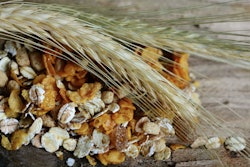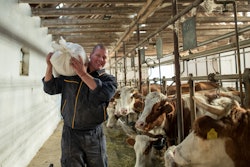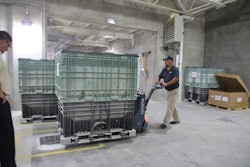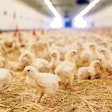
Research reveals how the widespread use of antibiotics in Asian animal agriculture threatens human health through the development of antimicrobial resistance (AMR). Meanwhile, a key finding from a recent global survey is the continued use of antimicrobials for animal growth promotion in many countries.
It is widely accepted that AMR poses a growing threat to public health, and that resistant bacteria can be passed from farmed animals to people through the food chain.
Recently published research has highlighted that antibiotics that are critically and highly important for human medicine are widely used in South Asia and Southeast Asia in the farming of livestock, poultry and aquaculture species.
Results of a literature review revealed the widespread use of critically and highly important antibiotics in livestock, poultry and farmed fish and their products. This is according to Gongal Gyanendra of the World Health Organization (WHO) Regional Office in Southeast Asia in New Delhi, and co-authors at Guru Angad Dev Veterinary and Animal Sciences University in Ludhiana in India.
Based on their findings, the researchers urge Asian nations to strengthen their regulation and surveillance of antimicrobial use in animal agriculture. This would help to stem an alarming rise in AMR in the region, they state, and maintain the efficacy of these medicines for medical and veterinary use.
Countries in the region should aim to adopt the “One Health” approach supported by the WHO and other international agencies, according to the authors. They suggest this involves developing a harmonized framework across the region for the regulation and monitoring of antimicrobial use in food animals.
Furthermore, they recommend the promotion of alternatives to antibiotics for animals in order to reduce the reliance on their use, including vaccination, probiotics and changes to husbandry practices.
These conclusions came after an extensive literature review. It identified more than 100 papers published during the period 2011-20, and covering the use of antibiotics in livestock, poultry and fish and AMR assessment studies in 10 Asian states.
Published in the Journal of Infection and Public Health, the paper is titled “Review of antibiotic use and resistance in food animal production in WHO South-East Asia Region.”
WOAH repeats call for end to antibiotics as growth promoters
At the end of 2023, the World Organisation for Animal Health (WOAH) published an update on the use of antimicrobials for growth promotion in farmed animals across the world.
It found that one in five WOAH member states continues to allow the use of antimicrobials as growth promoters, and that the majority of these nations have carried out no form of risk analysis at all.
Furthermore, WOAH expressed concern that 11% of its members still allow the use for this purpose of critically important antimicrobials for human medicine, such a colistin.
Approximately half of the nations have no regulations in place for using antimicrobials in place for animal growth promotion.
Last but not least, WOAH reports that labelling of feed additives in some countries is inadequate. As a result, it says, farmers and veterinarians may be unknowingly administering antibiotics to farmed animals.
WOAH reminded its membership of their 2016 commitment to ban the use in animals of the highest priority antimicrobials for humans, as well as to phase out the use of antimicrobials in animals for growth promotion.
To address the global threat to human health from AMR, WOAH called on its members to act on these commitments.


















